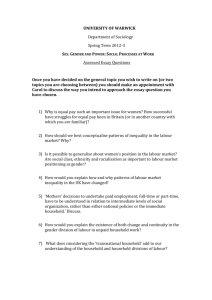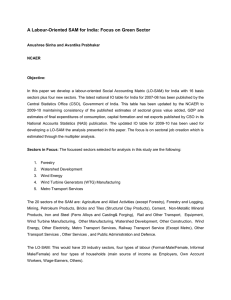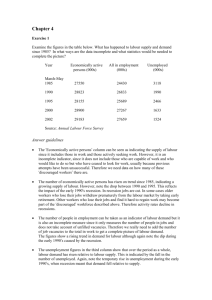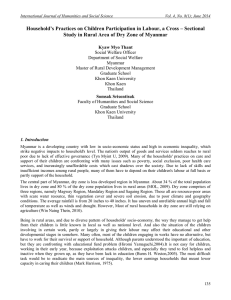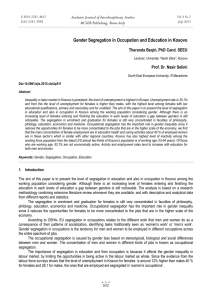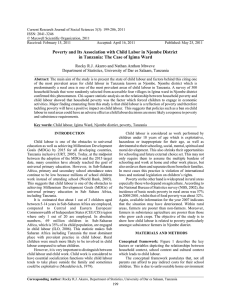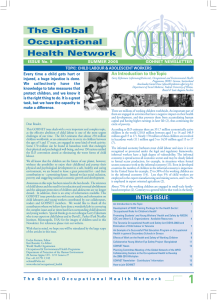The Gender Division of Labour
advertisement
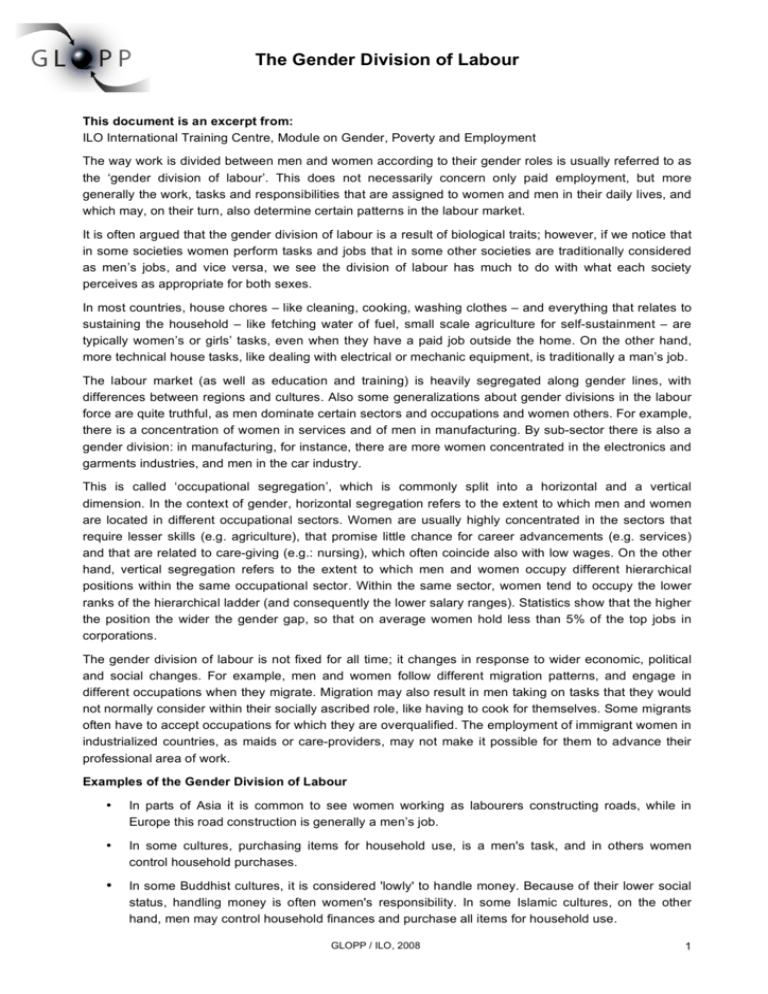
The Gender Division of Labour This document is an excerpt from: ILO International Training Centre, Module on Gender, Poverty and Employment The way work is divided between men and women according to their gender roles is usually referred to as the ‘gender division of labour’. This does not necessarily concern only paid employment, but more generally the work, tasks and responsibilities that are assigned to women and men in their daily lives, and which may, on their turn, also determine certain patterns in the labour market. It is often argued that the gender division of labour is a result of biological traits; however, if we notice that in some societies women perform tasks and jobs that in some other societies are traditionally considered as men’s jobs, and vice versa, we see the division of labour has much to do with what each society perceives as appropriate for both sexes. In most countries, house chores – like cleaning, cooking, washing clothes – and everything that relates to sustaining the household – like fetching water of fuel, small scale agriculture for self-sustainment – are typically women’s or girls’ tasks, even when they have a paid job outside the home. On the other hand, more technical house tasks, like dealing with electrical or mechanic equipment, is traditionally a man’s job. The labour market (as well as education and training) is heavily segregated along gender lines, with differences between regions and cultures. Also some generalizations about gender divisions in the labour force are quite truthful, as men dominate certain sectors and occupations and women others. For example, there is a concentration of women in services and of men in manufacturing. By sub-sector there is also a gender division: in manufacturing, for instance, there are more women concentrated in the electronics and garments industries, and men in the car industry. This is called ‘occupational segregation’, which is commonly split into a horizontal and a vertical dimension. In the context of gender, horizontal segregation refers to the extent to which men and women are located in different occupational sectors. Women are usually highly concentrated in the sectors that require lesser skills (e.g. agriculture), that promise little chance for career advancements (e.g. services) and that are related to care-giving (e.g.: nursing), which often coincide also with low wages. On the other hand, vertical segregation refers to the extent to which men and women occupy different hierarchical positions within the same occupational sector. Within the same sector, women tend to occupy the lower ranks of the hierarchical ladder (and consequently the lower salary ranges). Statistics show that the higher the position the wider the gender gap, so that on average women hold less than 5% of the top jobs in corporations. The gender division of labour is not fixed for all time; it changes in response to wider economic, political and social changes. For example, men and women follow different migration patterns, and engage in different occupations when they migrate. Migration may also result in men taking on tasks that they would not normally consider within their socially ascribed role, like having to cook for themselves. Some migrants often have to accept occupations for which they are overqualified. The employment of immigrant women in industrialized countries, as maids or care-providers, may not make it possible for them to advance their professional area of work. Examples of the Gender Division of Labour • In parts of Asia it is common to see women working as labourers constructing roads, while in Europe this road construction is generally a men’s job. • In some cultures, purchasing items for household use, is a men's task, and in others women control household purchases. • In some Buddhist cultures, it is considered 'lowly' to handle money. Because of their lower social status, handling money is often women's responsibility. In some Islamic cultures, on the other hand, men may control household finances and purchase all items for household use. GLOPP / ILO, 2008 1






